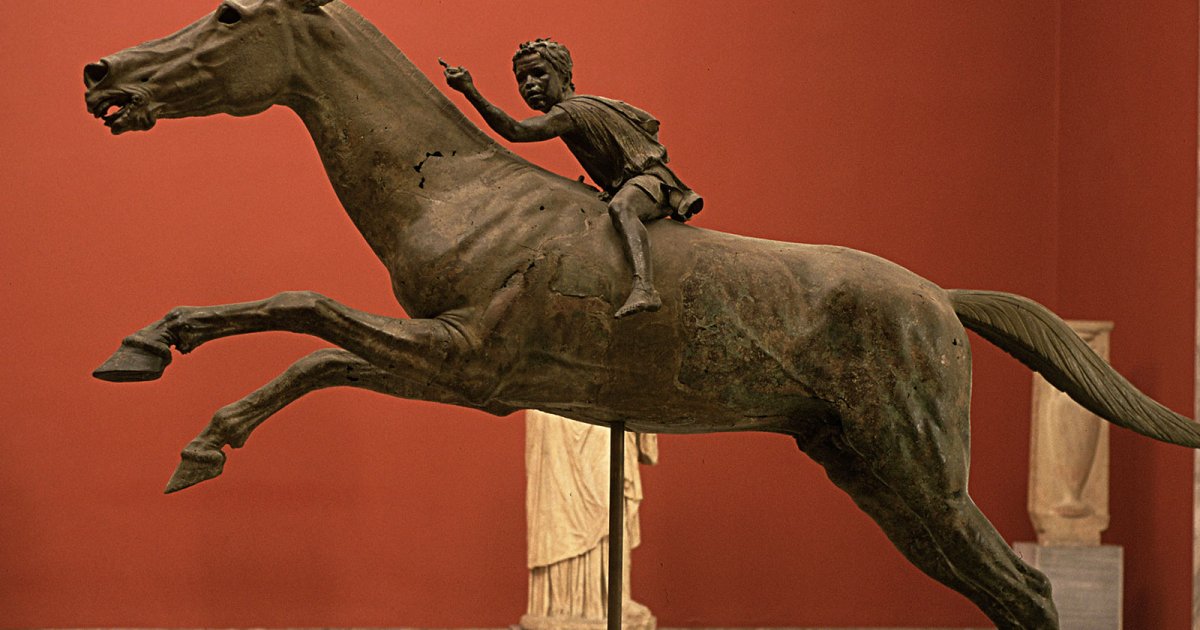ARCHEOLOGICAL MUSEUM, Jockey Of Artemision Room 21
 Language: English / USA
Language: English / USA
The awe-inspiring “Jockey of Artemision” bronze statue before you has virtually no equal. It was found in pieces, at different times, in the sea off Cape Artemision between 1928 and 1937 and subsequently pieced together.
The artist is unknown, although the work dates to around 140 BC. It is very different from the images of the equestrians you may have seen on the Parthenon frieze, and is an excellent representation of the expressive freedom of the last great period of Greek art, known as Hellenism, which developed in the opulent courts of the great monarchs that followed the empire of Alexander the Great.
The jockey is a boy aged around 12, riding bareback, his bare feet in the spurs. He is portrayed with his left arm raised to cue the horse to full speed, while he is whipping it with his right, turning his head to check on his rival in the final adrenalin rush of the race. The horse’s nostrils are dilated, its eyes wide open, its ears folded back, and muscles tensed to a maximum; it looks as if it is taking flight in a last desperate leap towards the finishing line. The harmony and the solemn calm you have observed in the previous works seem to vanish before your eyes.
Perhaps one of the meanings of this formidable masterpiece is to be observed in the relationship between Man – represented here by a young boy – and the awesome force and power of nature. Isn’t it thrilling to see this incredibly tiny human attempting to control the frenzied flight of the animal?
In the golden age of Greek culture, when the Parthenon was built and decorated, it was believed that Man ruled over Nature. At the time this sculpture was made, Greece was under foreign control. Rather than dominating Nature with his self-assurance, it’s as if the jockey is being dragged at lightning speed towards an unknown fate by forces more powerful than himself, and is investing every drop of energy he has to steer his destiny.
An interesting fact: the Olympic races enjoyed such renown that the Emperor Nero took part in them, victorious every time. It seems that once he was even thrown out of the chariot he was racing in, yet still managed to win the race, because all his rivals stopped to wait for him: who, indeed, would have dared displease the most powerful man in the world?



